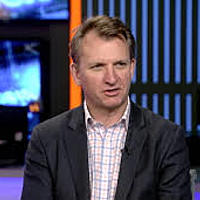Is ‘something’ breaking? Why we're long bonds, bearish oil
The critical narrative in markets in recent months has been that: “The Fed will tighten until something breaks”. That theme was reinforced by Powell at last month’s Fed press conference when he effectively took a ‘whatever it takes’ approach to fighting inflation. As we highlighted HERE, the Fed’s decision to pause/stop tightening will be principally based on employment & inflation data1 (i.e. lagging indicators).
Unsurprisingly, therefore, cracks are emerging in the global financial system.
In particular, and as always when central banks withdraw liquidity, the stress begins (& builds) in the vulnerable parts of the global economy. The UK, with a current account deficit of 8% of GDP, is obviously exposed in that environment (given that we rely on “the kindness of strangers2” to fund ourselves). The moves lower in Gilt prices and Sterling (and a ‘mini crisis’ in the pensions market) are unsurprising in that respect. Elsewhere, tighter global liquidity is putting pressure on certain European banks, and is clearly causing stress amongst key/vulnerable EM economies (with a marked backup in government borrowing costs, e.g. see FIG 1)….
FIG 1: Polish, Hungarian, and South Korean 10y government bond yields (%)
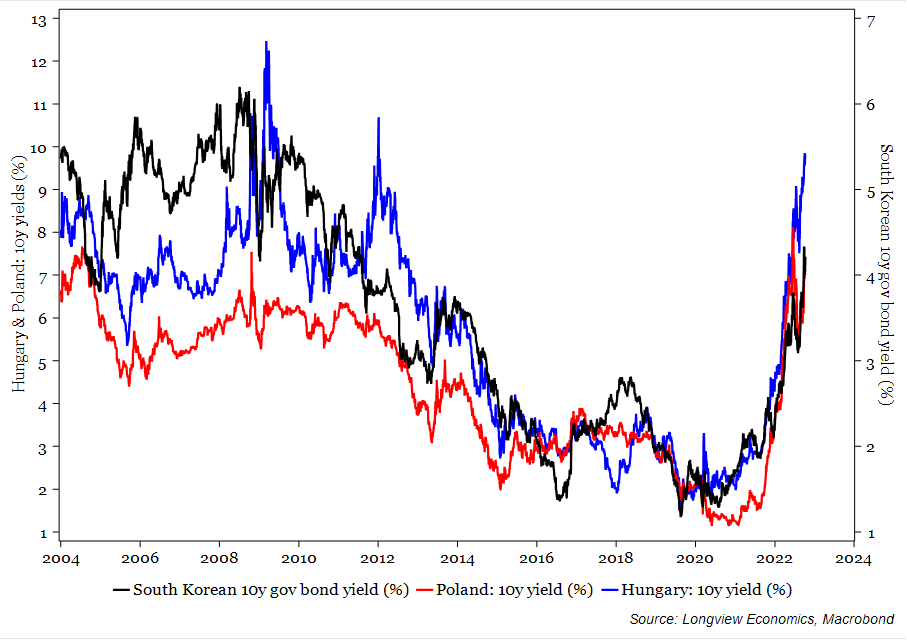
1 Albeit, in reality, the rates market will also be a key driving factor in the path of Fed tightening.
2 As described by ex-Bank of England governor Mark Carney.
… with some currencies down by 15 – 30% this year (FIG 2), while others are considerably lower (e.g. Argentinian peso: -40% YTD).
FIG 2: Various EM currencies (YTD, %)
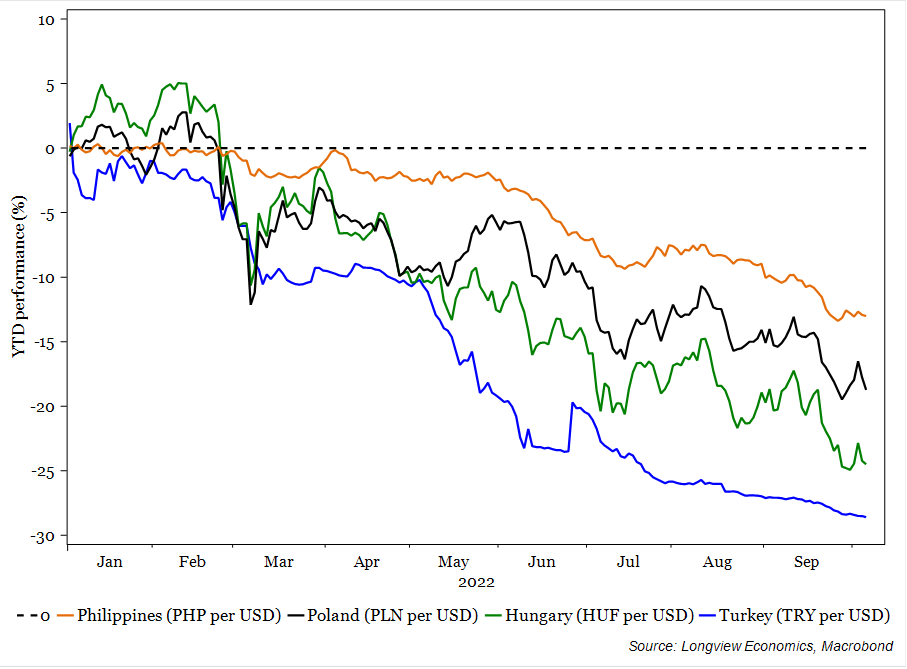
Will the Fed pivot?
The debate has therefore shifted somewhat this week, with calls for a Fed pivot (or at least a temporary change in tone from the Fed/other central banks). In that respect, the RBA’s rate hike (+25bps) was smaller than expected (50bps), while certain institutions have tried to put pressure on the Fed to pause (e.g. the UN, see HERE).
In the absence of sharply lower inflation readings in the near term, though, none of that will change the Fed’s course much (at least for now). Having already misjudged inflation once, Powell is now firmly against what he calls a “premature loosening” of policy. The Fed will therefore still probably deliver on its ‘QT’ program, as well as (most of) the hikes that have been priced into the rates curve (i.e. a further 140bps by March next year). As such, the risk of a policy mistake (and recession) remains high, as we recently highlighted HERE.
Having said that, leading indicators of inflation suggest that a policy pivot is coming/in the pipeline (see below), probably early next year. With that, further hikes are unlikely to be priced into the front end of the rates curve.
If that assessment is correct, then the late September ‘blow off top’ in 10-year yields probably marks the final move higher in this ‘mini-cycle’ upswing. Of interest, this upswing is now two years old, and therefore similar to the ‘normal’ duration of ‘mini-cycles’ (which typically last for 1 – 3 years).
FIG 3: US 10-year Treasury yield (%), shown with its 200-day moving average
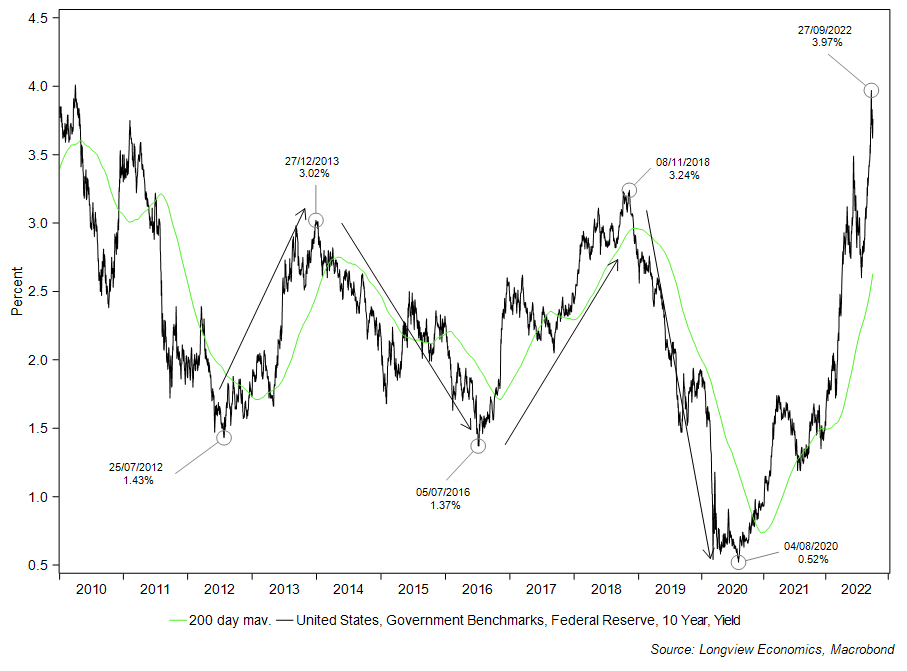
Given that backdrop, we increased our US Treasury exposure in our strategic portfolio last week (see HERE), and we continue to ‘receive’ US 10-year rates in our recommended macro portfolio (see HERE).
Inflation: A monetary phenomenon
Ultimately, though, whether US 10-year bond yields have ‘topped out' (or not) will hinge on the question: Will US inflation fall/ease off (and, if so, when & how quickly)?
If we’re correct, and the US/global economy rolls over into recession next year (see HERE for detail), there’s a strong macro argument for lower inflation (& bond yields) in the next 6 – 12 months.
On top of that, though, there’s other, growing evidence that US inflation rates will shortly move lower. In particular, monetary factors are now disinflationary.
It’s become clear in the past 18 months that ‘monetary factors’ have been one of (if not the) principal driver of high inflation post-pandemic (alongside others, e.g. supply chain disruptions & so on). It’s no surprise, therefore, that the monetarists’ inflation forecasts were the most accurate (e.g. Tim Congdon et al), while the Fed and other Keynesians misjudged the path of inflation.
Illustrating the importance of money creation, at a very top level, the economies with the biggest increase in money supply experienced the strongest inflation (generally). In the US, for example, the money supply peaked at 27% (in Feb 2021). Inflation has therefore been high (the headline is currently 8.3%). In China & Japan, in contrast, the monetary response to the pandemic was modest. Inflation rates have therefore been much lower. Broadly speaking, that observation applies across most major economies (and is shown in FIG 4 below for the G20 countries).
FIG 4: G20 ‘peak’ inflation rate of the past 18 months regressed against the ‘peak’ M2 money supply growth rate (Y-0-Y %), of the past 18 months
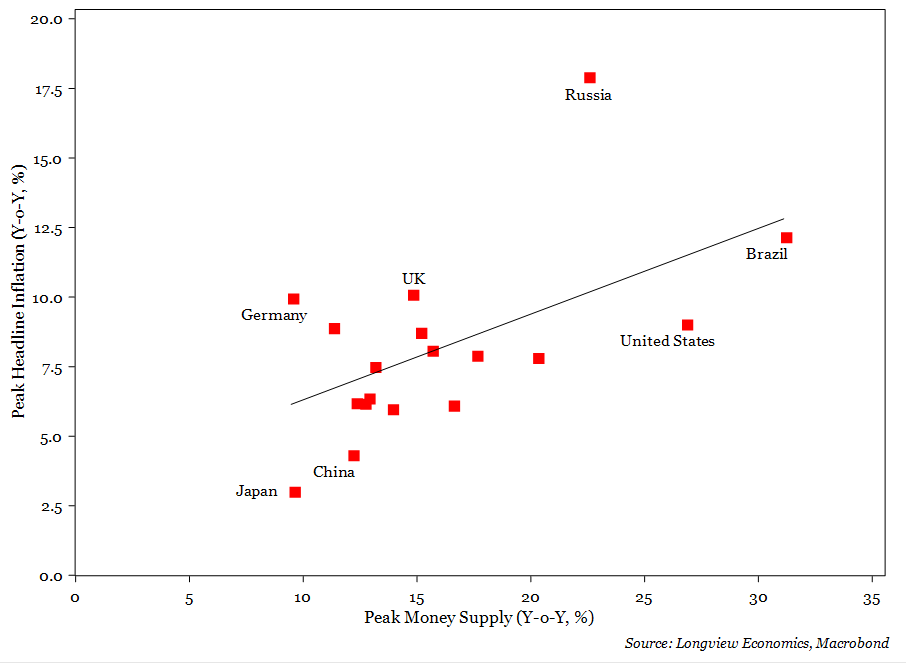
That key driver of high inflation, though, has now shifted into reverse. In the US, M2 money supply growth has fallen sharply (and, in real terms, is now shrinking), see FIG 5.
FIG 5: US M2 money supply growth (Y-o-Y %), real vs. nominal
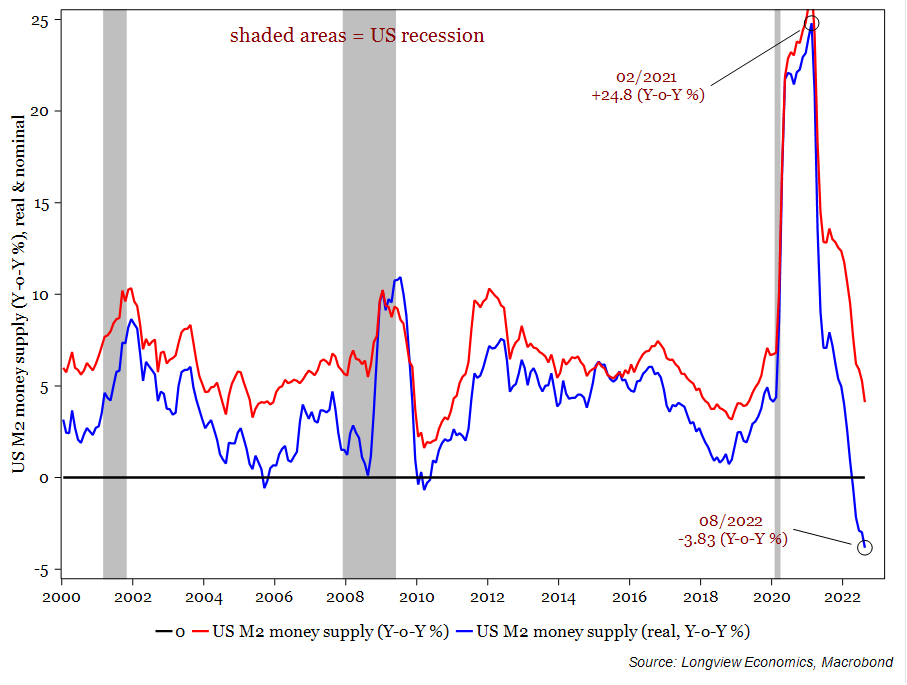
Of interest, the major spikes in inflation in the past 150 years have all been associated with major spikes in money supply growth. When money supply growth slowed, though, from high/extreme levels, that was typically associated with a fall in inflation. Arguably the only exception was in the 1970s, when the correlation broke down somewhat. As we show HERE, though, that principally reflected the impact of price controls (which came & went through the decade and distorted CPI readings).
FIG 6: US M2 money supply growth (Y-o-Y %) vs. US CPI (Y-o-Y %)
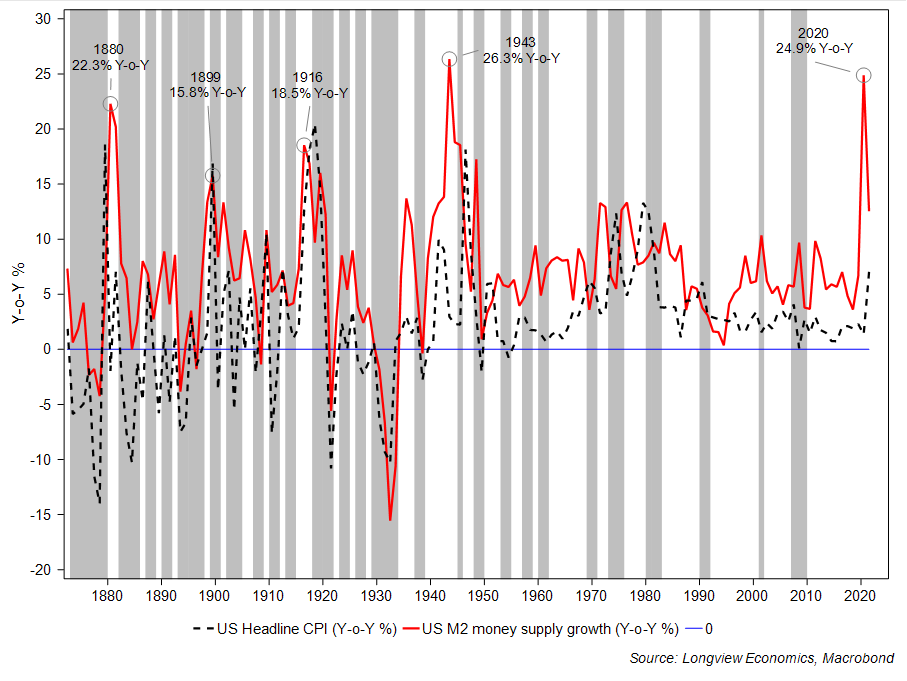
US inflation: “Our survey said….!”
On top of all of that, and at a more granular level, several indicators of US inflation are carrying a similar message.
In particular, small businesses are planning to cut prices (i.e. according to the NFIB small business ‘price plans’ survey, FIG 7). As the chart below shows, that survey typically leads core CPI inflation by about 6 months. On that measure, CPI inflation is therefore poised to fall sharply.
FIG 7: US core CPI (Y-o-Y %) vs. NFIB Small Business Price Plans: Next 3 months (6m advanced)
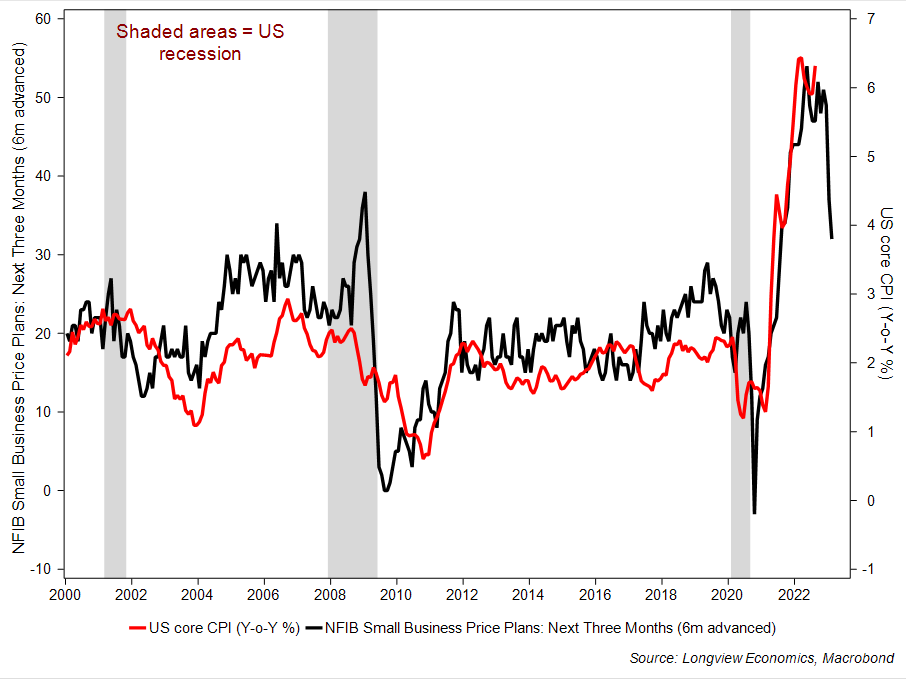
US inflation: goods vs. services
At this stage, the obvious source of disinflationary pressure is goods prices. Durable goods price inflation, for example, has been relatively ‘normal’ for a handful of months (M-o-M %, see FIG 8), while non-durable goods prices have been shrinking (i.e. reflecting weakness in oil and other commodity prices).
Much of that is well-known/understood….
FIG 8: US CPI durable and non-durable goods CPI inflation (M-o-M %)
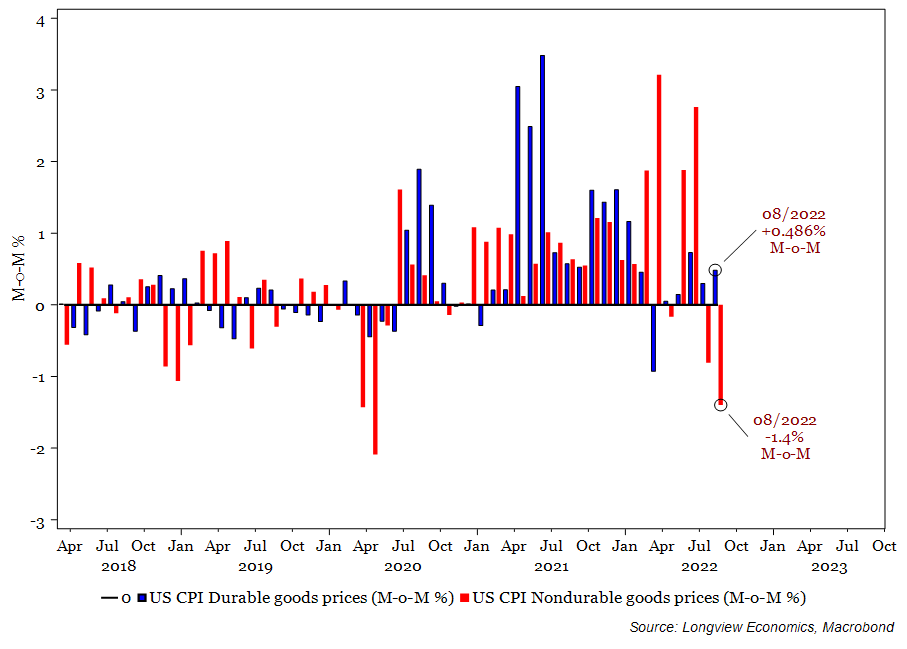
…and partly reflects the excessive build-up of goods inventories in key sectors (FIG 9)….
FIG 9: US inventories (manufacturing, wholesale, & retail), billion USD

…which is consistent with the fall in ‘order backlogs’ (see FIG 10, i.e. given the easing of bottlenecks, as orders were filled/delivered). All of which has resulted in ‘too much’ supply (and therefore price discounting amongst retailers, e.g. see HERE).
FIG 10: ISM Manufacturing (backlog of orders) vs. US PPI goods inflation (Y-o-Y %)

What’s arguably concerning markets more, at this juncture, is services inflation. Unlike goods, service sector prices currently show little sign of easing off (FIG 11). Somewhat troublingly, it’s also the ‘type’ of inflation that the Fed is able (and willing) to control with tighter monetary policy (i.e. given that it’s principally domestically generated – mostly driven by wage and credit growth3).
FIG 11: US CPI Services vs. services less rent of shelter (M-o-M %)
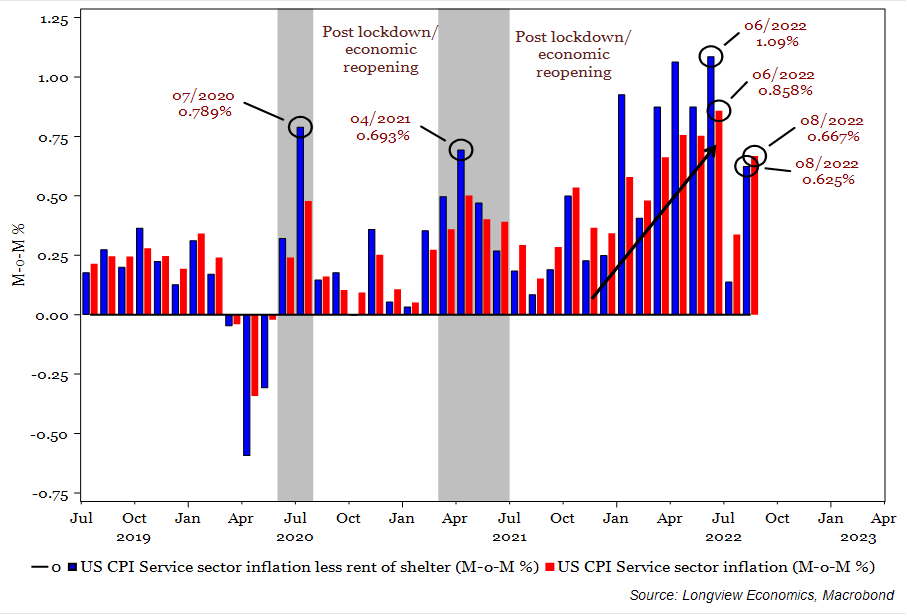
3 Goods prices, in contrast, are more heavily influenced by the dollar, commodity prices, and supply side factors.
This week’s ISM Services report, though, was encouraging on that front (and for the bulls on US Treasuries). In particular, the ‘prices paid’ index fell again, and typically leads service sector PCE inflation by around 6 months (FIG 12).
FIG 12: US ISM prices paid (advanced 6 months) vs. PCE services inflation (Y-o-Y %)
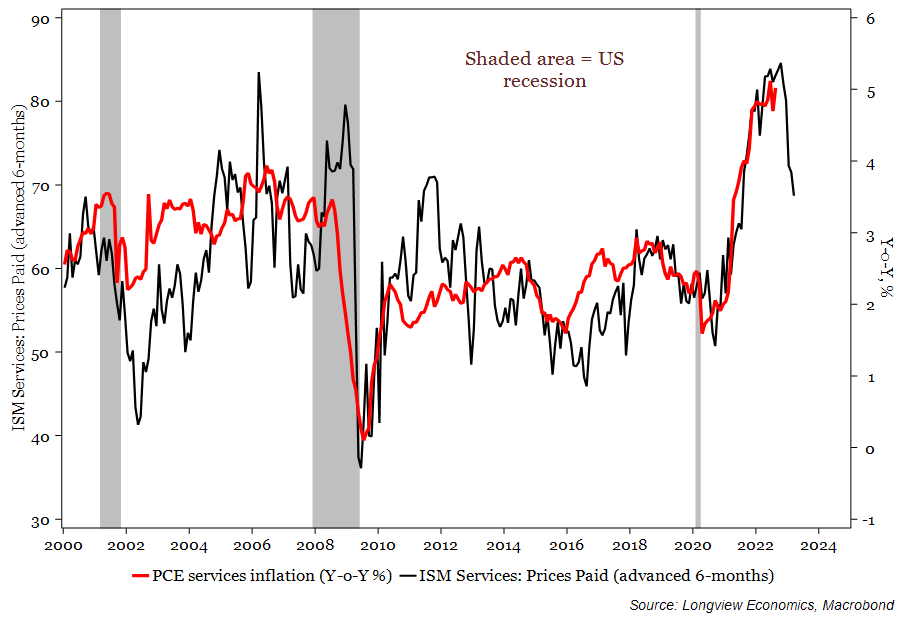
Elsewhere this week, job openings missed expectations and fell sharply in August. As the chart below shows, weaker openings are confirming the turn in wage growth, which has eased since its March peak (and moved lower again in today’s nonfarm payroll report)…
FIG 13: US job openings (number) vs. average hourly earnings (Y-o-Y %)
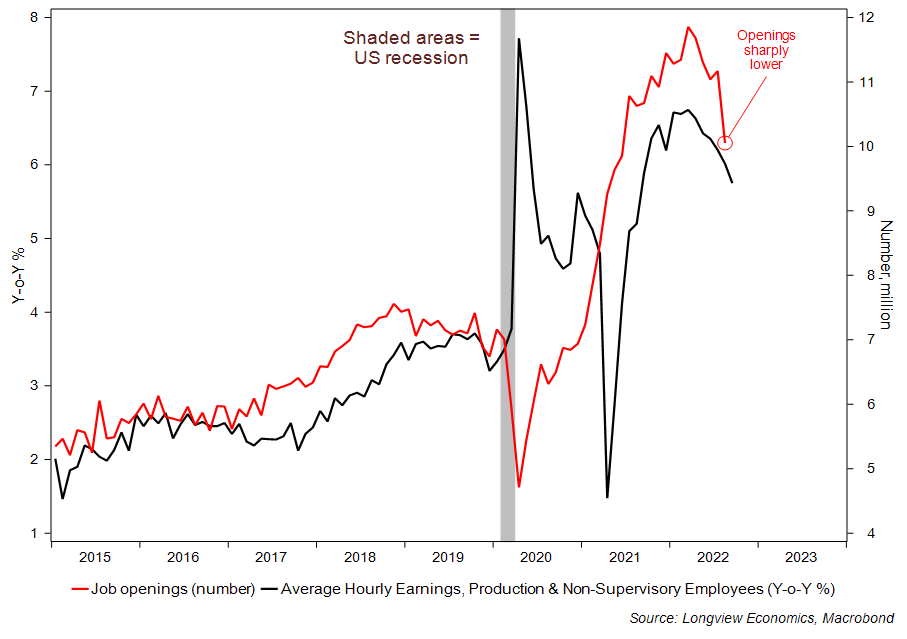
…and should eventually work its way into softer services inflation (see FIG 14 below).
FIG 14: Average hourly earnings (Y-o-Y %) vs. PCE services inflation (Y-o-Y %)

Overall, therefore, the message of: (i) the monetary indicators; and (ii) the (survey-based) leading indicators of inflation are generating an increasingly clear message. That is, inflation is about to peak, if it hasn’t already.
OIL: How big is the OPEC+ supply cut…really?
The oil price, naturally, is a ‘wild card’ in the context of that inflation view. This week’s OPEC+ announcement bears thinking about in that regard (i.e. a 2 mbpd quota cut, which is the largest since April 2020).
Of note, despite the size of the cut, the oil price rally has been relatively muted, with WTI currently trading at around its 50 day moving average (and therefore merely at the top of its recent downtrend channel – see FIG 15).
FIG 15: WTI oil price candlestick (USD/bbl), shown with key moving averages
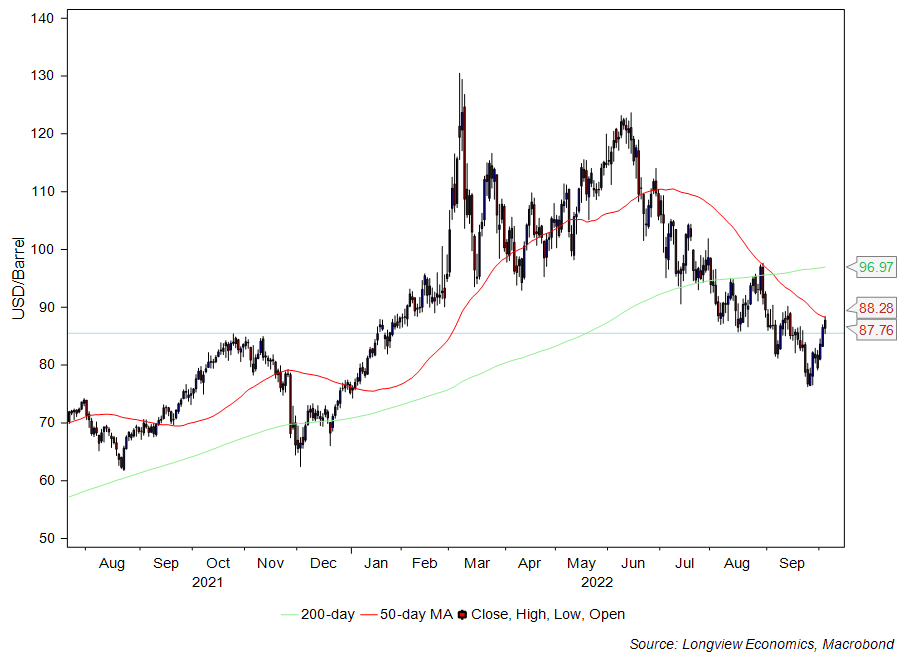
Arguably the key reason is that, in reality, about half of the announced cut will actually be delivered. Only five OPEC+ members are at their production quota level (Saudi, Iraq, the UAE, Kuwait, and Algeria). They are therefore the only countries that will be expected/likely to comply & cut output. Every other OPEC+ member is already producing well below their quota and will not have to implement cuts (mainly due to ongoing production problems, e.g. in Russia, Kazakhstan, Nigeria, and Algeria – see below). As such, based on the allocation of cuts to each member, the maximum cut is likely to be 1.1 mbpd.
Furthermore, even after adjusting our supply and demand balance (see FIG 16), significant supply surpluses are still likely next year4. In particular, if our recession view is correct, global oil demand will likely fall faster than supply. In that context, and as Brad highlighted earlier this week, the OPEC supply response is likely too slow/behind the curve.
FIG 16: Oil supply & demand balance (mbpd), shown with Longview forecast (before & after this week’s OPEC+ quota cut)

4 We would note, though, that the shape of the balance shown in the chart above depends on the timing of the US/global recession. In our forecast, we show demand troughing in Q1 2023. Naturally, it’s plausible that the sharp fall in oil demand will occur later (e.g. in Q2 or Q3). That would push back/delay the peak in surplus supply.
Overall, therefore, the outlook for oil prices remains bearish in 2023 and adds to our expectation that inflation will likely fall/ease off over the coming months.
Never miss an insight
If you're not an existing Livewire subscriber you can sign up to get free access to investment ideas and strategies from Australia's leading investors.
And you can follow my profile to stay up to date with other wires as they're published – don't forget to give them a “like”.
2 topics
